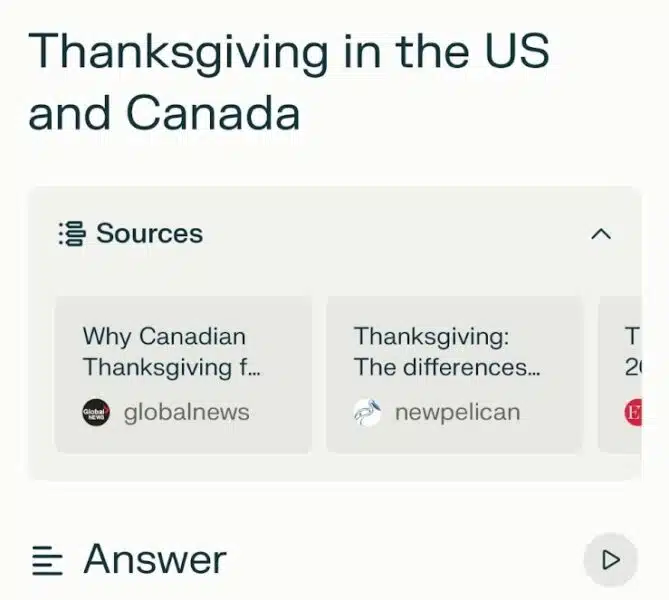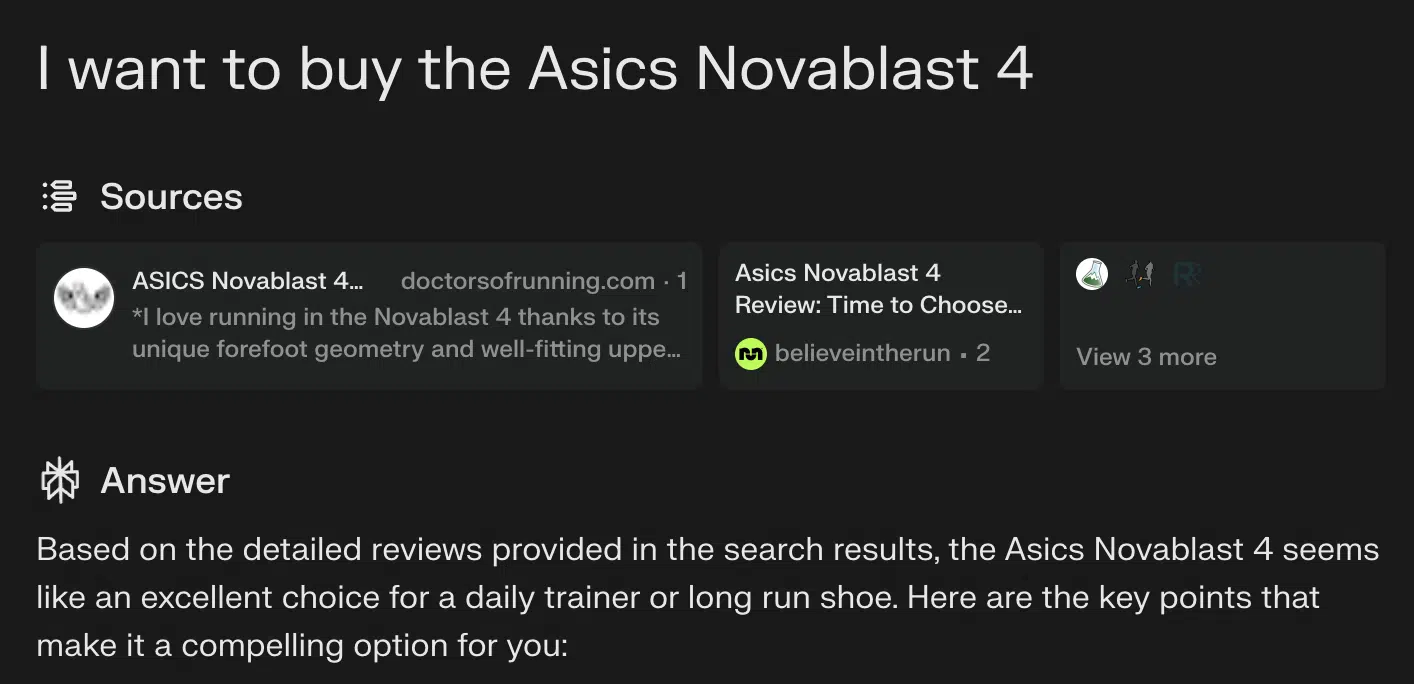
The rise of generative artificial intelligence and large language models (LLM) has opened up the possibility of disrupting Google’s dominance in the search engine market. One such challenge is Perplexity, an AI-powered search platform that aims to provide users with summarized answers and cited sources instead of the traditional list of web page links.
While it’s still overshadowed by Google’s massive search volume, Perplexity’s approach offers insight into how AI could reshape the search experience and the multibillion-dollar search advertising industry.
What is Perplexity AI?
Perplexity describes itself as “your AI-powered Swiss army knife for information discovery and curiosity.” It sits on top of ChatGPT 3.5 and its own model. The premium version also includes access to GPT-4, Claude 3, Mistral Large and an experimental perplexity model.
While it’s already getting significant traction, answering more than 2 million queries a day, it has a long way to go to hurt Google, which gets so many searches in 20 seconds. However, consumers are beginning to find value in summarizing data and information. Getting a summary “answer” faster can be valuable.
How to approach AI-powered search platforms like Perplexity
So how should brands and search engine marketers think about a platform like Perplexity? There are three things to keep in mind:
1. Do your research
You must use these tools. I’m not suggesting you have to use them exclusively, but you just can’t take it for granted that you’ll get to them later. These tools are here and evolving rapidly.
Do some research, make some queries, and then refine them with different criteria. See what the answers are.
Do the answers help your business? Do the answers mention your business? Is there new information that you hadn’t considered before that should be something you work into your marketing and content strategy?
Below are two simple example searches: “best car insurance” and “car wash near me”.

Comparing the two results from Google and Perplexity, I first notice the lack of ads in the car insurance example.
Allstate takes up almost the entire page with their search ad. Perplexity gives the user more answers with quotes. The information the user can find useful and dig deeper, but getting to a specific website is more difficult.
In some cases, this can improve the user experience by removing the click and summarizing the most “useful” information (as deemed by the model).
The map details in the car wash search are similar, but Google Maps offers the ability to link or call the business directly from the search results. This takes a click away from the Perplexity results to get there.
Get the daily search newsletter marketers trust.
2. Sources = rankings
In Perplexity, one of the key differences is the citations or sources. This is critical for two major reasons:
It provides valuable insight into the reasoning behind the answer. Although many language models now provide insight into their sources, presenting them prominently allows users to better understand the answer and explore it further if they wish. From a search marketer’s perspective, these sources can be compared to new organic search listings. If Perplexity provides the answer directly, users may not need to visit your site to take action. However, being cited as the source of the answer could become the next best option for brands as consumers become more familiar with these models and brands aim to retain search traffic.

Dig deeper: LLM optimization: Can you influence generative AI outcomes?
3. Conversations vs. searches
Perplexity follows a similar approach to other LLMs, allowing you to have a ‘conversation’. This means you can ask one question and the next question includes the context of the previous question.
For example, when I asked, “I’m a 45-year-old male who runs about 20 miles per week. What are the best running shoes for me?” I then followed up this answer by simply saying, “What if I increase my mileage should I change my options?”
The model learned that I am 45 years old and I am looking for shoe recommendations. I didn’t have to send that context again. He also suggested some related queries relevant to the conversation and deepened my research with simple answers.

What about Perplexity?
Perplexity has developed a robust model and user interface, which makes it easy for users to learn and use. But what happens? They need to determine their revenue model.
In the running shoes example, you may have noticed what didn’t happen. Perplexity did not provide a direct link to purchase the shoes, even when asked about purchasing a specific type. Despite the request to buy this brand, he could not provide a direct link to Asics. Even the sources didn’t link directly to the Asics site.

Commerce and conversions are not at the forefront of these models right now. Perplexity’s revenue model is the same as OpenAI and others. They offer a freemium model, with the ability to upgrade to additional features for $20 per month.
Since they earn some revenue from this model, I expect things to come that drive more business transactions. They can move to an affiliate or PPC model for these inquiries where Asics can buy access to that “answer” with a direct link to Asics.com.
Don’t think for a second that the $110 billion search market is going to zero. If anything, the speed and pace at which these tools can provide answers should drive more search and transaction volume, not less.
The bigger question is not what it does to search volume, but what it does to the revenue model. For now, we’ll have to wait and see what happens.
The views expressed in this article are those of the guest author and not necessarily Search Engine Land. Staff authors are listed here.
[ad_2]
Source link




